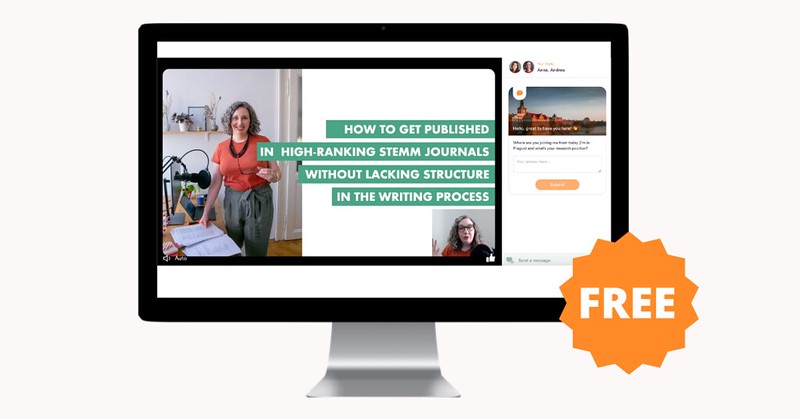My blog post on the five most common mistakes in scientific papers has been incredibly popular. So, I thought you may appreciate a grant proposal version of this post. This autumn has been filled for me with edits and reviews of funding applications. Here are the most common mistakes I see scientists make when writing their proposals.
1) The level of difficulty doesn’t match the reviewers’ background and time constraints
In other words, it’s often hard to understand what the proposed research is about. In my experience as an editor for grant proposals in the field of Chemistry, scientists usually overestimate how much pre-existing knowledge their proposal reviewers have and how much time the reviewers are willing to spend assessing the proposal.
There are a few things that make it hard to understand your writing. The first thing to mention is structure, which I pay a lot of attention to when editing. I highly recommend using a storytelling structure in your proposal (also see mistake #2). Closely connected to structure is the aspect of flow. Good flow in a proposal means that consecutive sentences and paragraphs should be linked to each other. The information you provide should build up slowly so that the reader can follow.
Zooming in further, the words you use matter too. You’re making your reviewers’ job hard when using, for example, different synonyms for the same thing (see language tip #3 in this blog post) or topic-specific jargon that hasn’t been introduced. Also, ditch those complicated sentence constructions that make your writing sound fancy but incomprehensible. Think: Use verbs instead of nouns whenever possible.
2) You haven’t identified a problem your research will solve
When you give someone a paper or proposal to read, you make their job easier if you give them a story to read. When I’m saying story, I don’t mean a made-up tale. I’m talking about implementing a narrative in your writing. And there’s one element that is probably the most important in a story: the element of tension. You can implement tension in your proposal by identifying the problem that your proposed research is solving. When the background information you provide is angled in this way, your reader will be more interested and curious about the research idea you are presenting them.

3) The page layout is overwhelming
This is such an easy fix that is still often over-looked. You probably know from your own experience that you are less motivated to read a wall of text than a document with a clear layout. Your reviewer is likely going to feel the same way. Things to consider regarding the layout or format of your proposal are using different fonts, font sizes or bold/italic text to differentiate sections, subsections, figure captions and the main text. I also recommend highlighting important sentences (as long as you don’t overdo it).
Don’t underestimate the power of white space either! In Word and other word processors, you can adjust the space between paragraphs and sections and the length of the indent at the beginning of a paragraph. And speaking about paragraphs, don’t have a single one span half a page. Apart from these stylistic changes, I recommend you avoid having paragraphs that are too long. A good length of a paragraph is 100 to 200 words.
4) You don’t provide enough detail about HOW you are planning to do your research
When a reviewer judges whether it would be worthwhile to fund your research, they need enough detail about your research plan. Reviewers need to see that you have thought through the whole project, the people involved and potential pitfalls. In most proposals, it’s a good idea to include a timeline (e.g., as a Gantt chart), a risk management plan, a budget, and a description of the roles of personnel or planned collaborations – even if not specifically mentioned in the funding application guidelines.
It’s crucial to be as specific about your plans as you can be. For example, if you think it would be worthwhile to explore a certain topic in collaboration with a peer, talk to them before you submit the proposal. If they agree to collaborate, you can be specific in your proposals about who you are going to collaborate with on the topic, why the collaboration is needed and why they are suitable for this role.
However, being specific doesn’t mean drowning your reviewers in unnecessary detail. If you are including information only relevant to someone who is actually doing the research, you can probably leave it out. You simply want to show your reviewers that you have thought your plans through, that your research is feasible and that you and your team are the best people to do it.
5) You provide redundant information
This is a tough one because striking the right level of detail is hard. Many scientists struggle to fit their proposal within the page or word limits. If you’re in this position, please don’t sacrifice necessary white space (see mistake #3) to fit in more information. If your proposal is too long or if you ran out of space to provide an adequate level of detail (see mistake #4), I recommend you search your document for redundant information. Most people tend to repeat themselves when writing, so it’s worth reading carefully through every sentence, better yet, every word to identify repetitions.
What you don’t want to do, however, is delete information that helps your readers to understand your research idea and its context. Reminding the reviewer of e.g. the gap you are solving can be appropriate too. You just want to describe your proposed research as concisely as possible.
There you have it, five common mistakes I see scientists make in their grant proposals. Have you made any of these mistakes? Let me know in the comments below!







